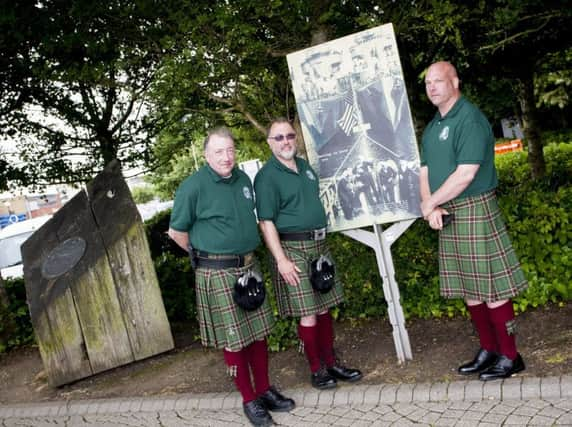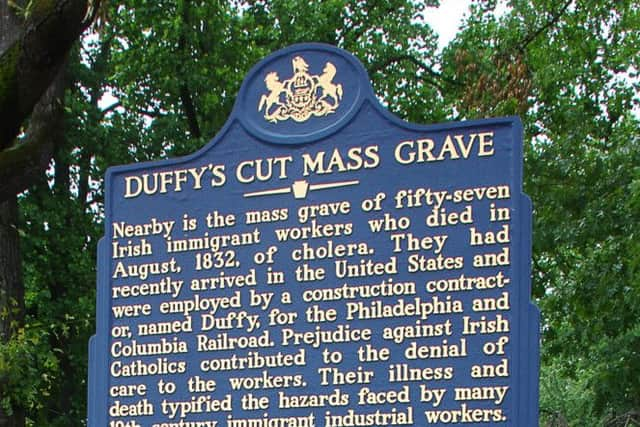Two brothers have dedicated the last 16 years of their lives to exploring the true story of what happened to 57 Irish emigrants


‘Massacre at Duffy’s Cut: Tragedy and Conspiracy on the Pennsylvania Railroad’ by Frank and William Watson was released last month and the first edition of the book has almost entirely sold out.
Duffy’s Cut is a mass grave of 57 Irish railroad labourers who died of cholera and murder twenty miles west of Philadelphia in 1832.
Advertisement
Hide AdAdvertisement
Hide AdThe ship that brought the Duffy’s Cut victims to America, the John Stamp, left the port of Derry in April of that year.


Within six weeks of arriving the 57 emigrants were dead.
Thanks to records kept by the ship’s captain and other documentation, 19 of the 57 labourers have been identified. Two were from County Derry, 11 from Donegal and five from Tyrone.
The Watson brothers - Frank, a Lutheran minister, and William, a historian at Immaculata University - first became aware of the tragedy of Duffy’s Cut through stories their grandfather told them.
Frank admits it then ‘took on a life of it’s own’ and the brothers continue to be involved with the site over a decade and a half later.
Advertisement
Hide AdAdvertisement
Hide AdThe brothers were bequeathed a set of papers by their grandfather, who had been as assistant to a former Chairman of the Pennsylvannia and Columbia Railway.
When the company went out of business in 1970, the Watson’s grandfather kept the file concerning Duffy’s Cut. It was marked as ‘confidential’.
On the cover of the file it said ‘Do not let this get out of the office’ and the brothers began to investigate further.
The Duffy’s Cut Project is an ongoing archival and archaeological search into the lives and deaths of the emigrants.
Advertisement
Hide AdAdvertisement
Hide AdWith the assistance of academics and archeologists they excavated the site and uncovered seven bodies, all of which showed signs of violence.
50 other bodies remained buried and the brothers hope to continue excavation work at the site and to do DNA testing on the bodies.
Frank Watson said the book is the first opportunity for himself and his brother to ‘tell the whole story of Duffy’s Cut for ourselves’.
“Our goal initially was to investigate our grandfather’s story. We had to tell the truth of what happened. Our grandfather was born in Sicily and worked his way up the railroad company. I think he realised this could have been him ending up in a ditch if he had arrived in a different century.”
Advertisement
Hide AdAdvertisement
Hide AdThe book tells the story of Philip Duffy, the railroad contractor who hired the labourers who travelled to Philadelphia from Derry, as well as the first detailed account of the archaeological dig for the remains of the Irishmen and one woman known to have been there. Two of those recovered from the site were buried in Ireland in 2015.“
Frank hopes that at some stage in the future they will be able to return to Derry to do a book signing and a talk on their 16 year journey at Duffy’s Cut.
William Watson said their previous visit to the city was an ‘interesting’ experience for the brothers.
“It was interesting for us to see where the emigrants left and it was a really amazing feeling to be on the spot where the old docks would have been.”
Advertisement
Hide AdAdvertisement
Hide AdHe said that excavation work will continue at the site and it may lead to the discovery of the worst case of mass murder in Pennsylvania.
“It’s possible they all died through violence, but we won’t know that until we get to the other 50. There is a concern that we are going to find the worst mass murder in the history of Pennsylvania.”
However, he said it is important to find out the truth because “there are 57 families’ genealogies that have holes in them because of this.”